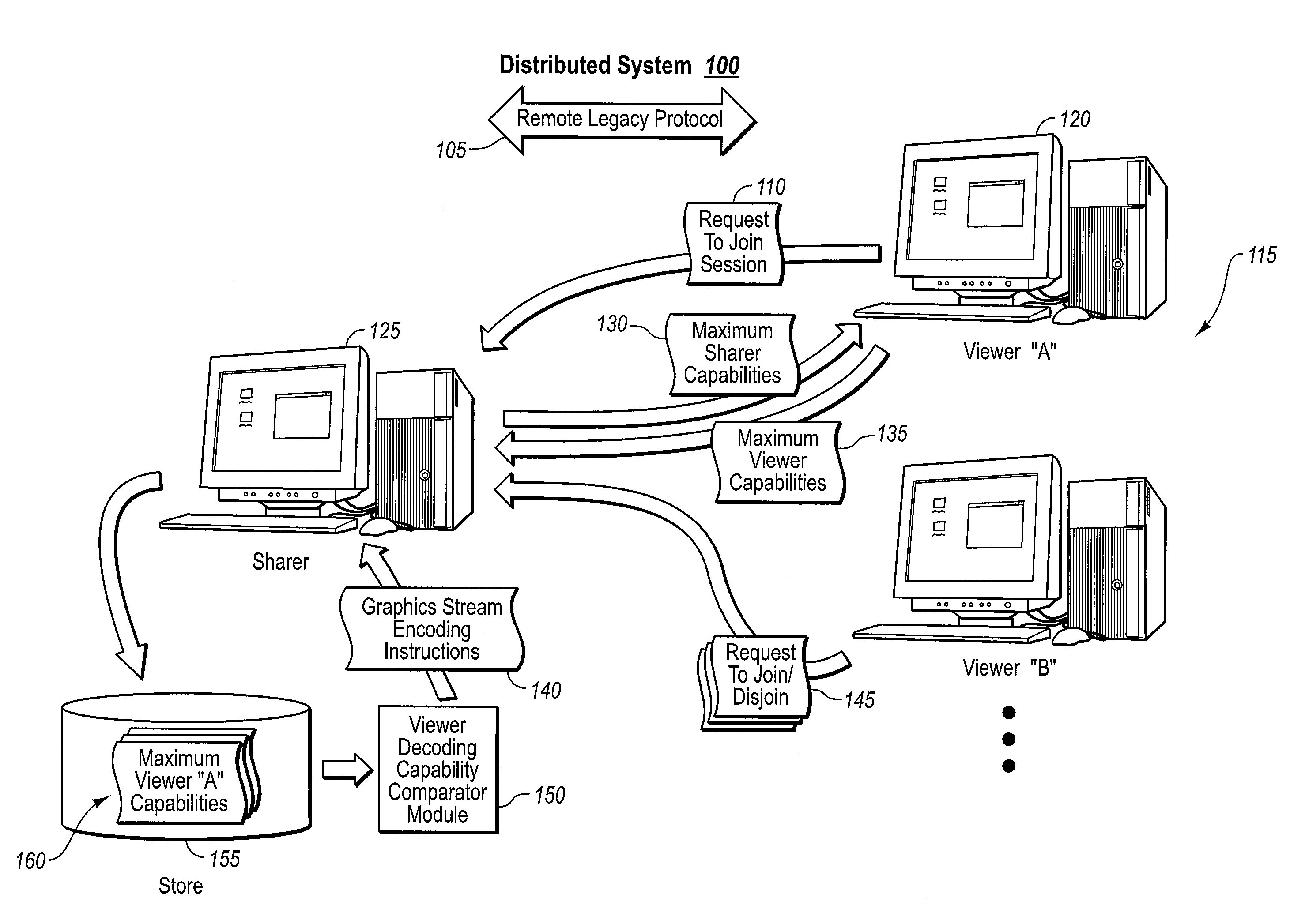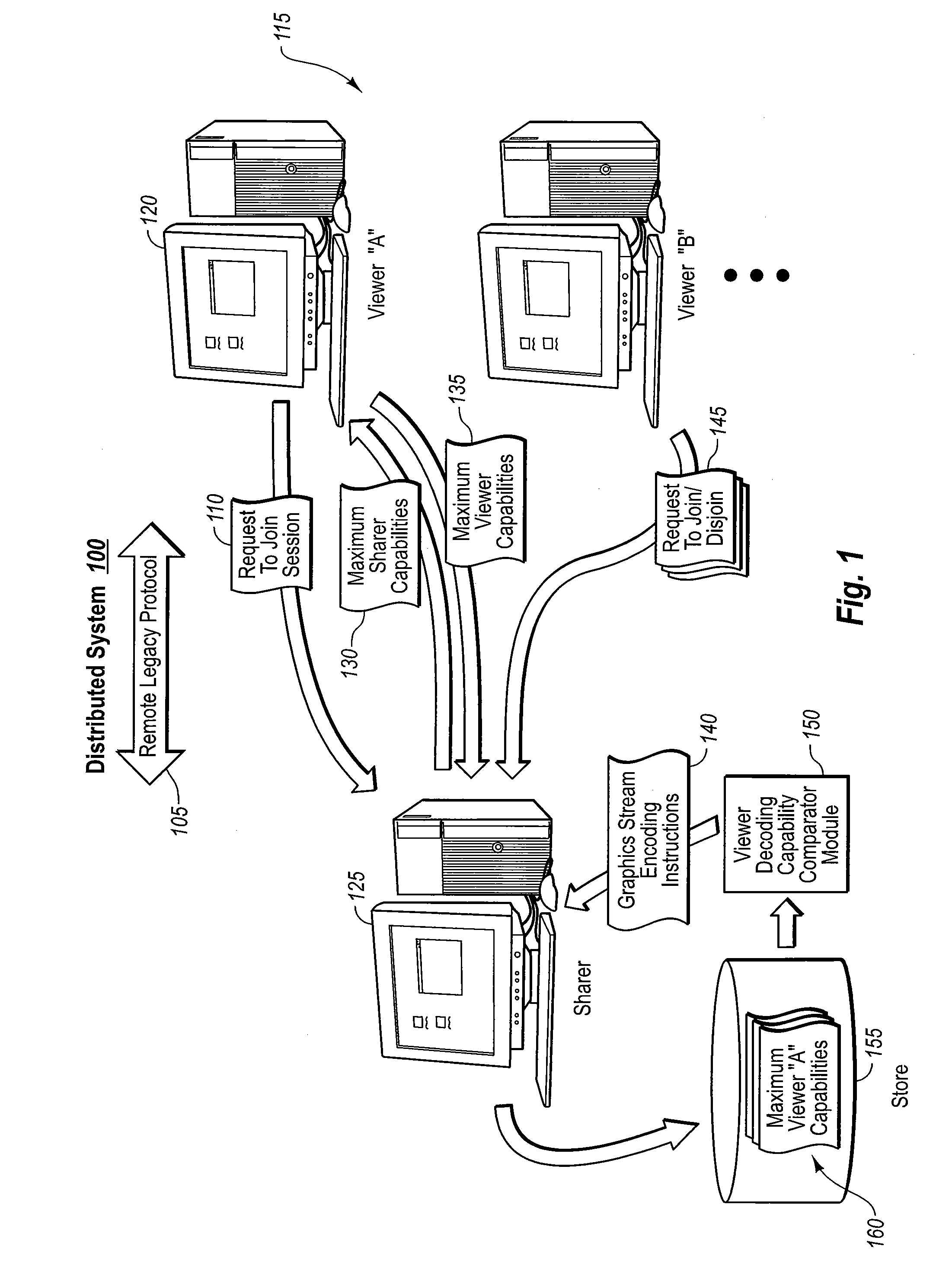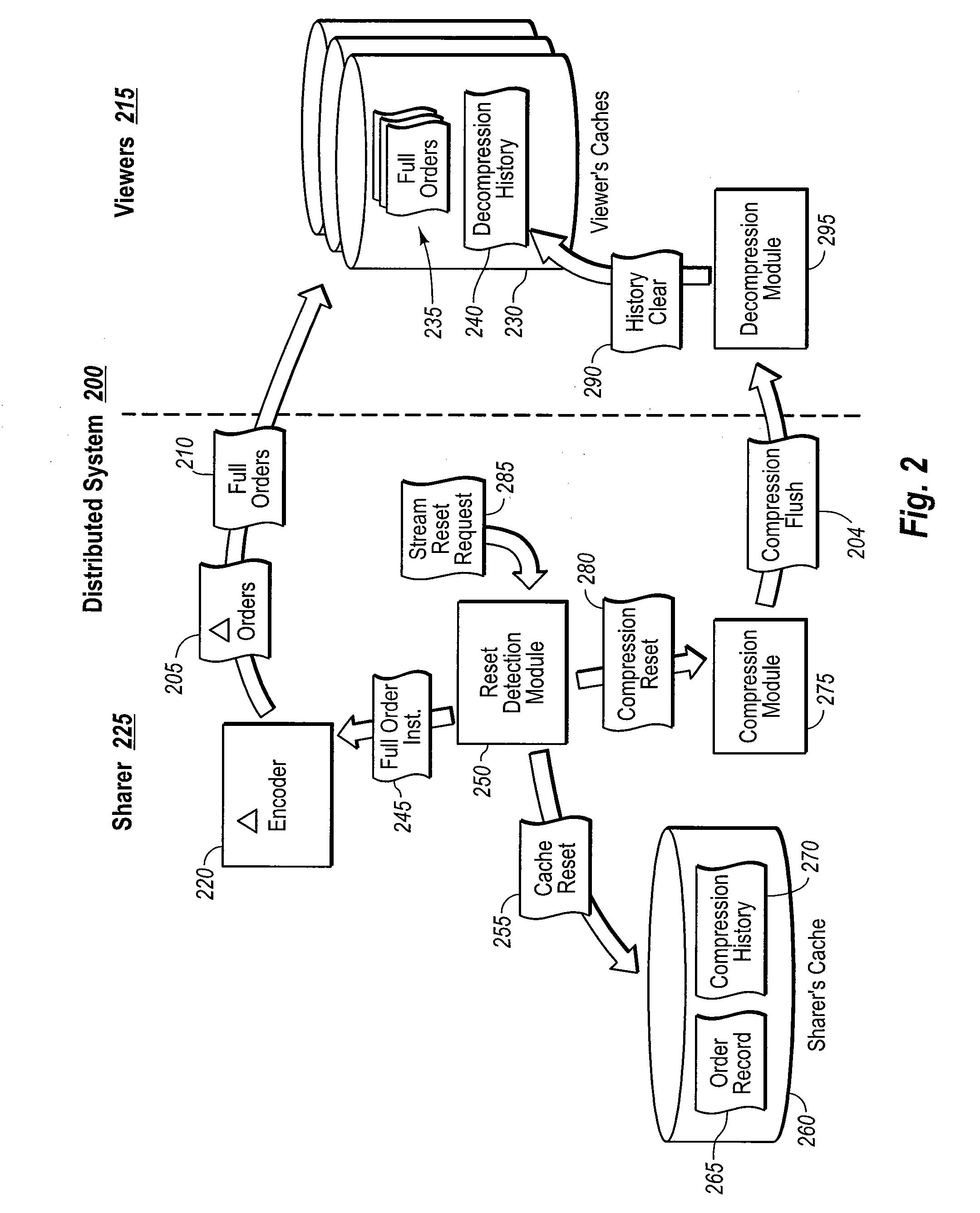Optimized desktop sharing viewer join
a desktop sharing and viewer technology, applied in the field of optimized desktop sharing viewer join, can solve the problems of increasing the difficulty of sharing data and resources on a network, increasing the cost of bitmaps in bandwidth consumption, and unable to act on the data sent by the sharer, so as to minimize the delay in broadcasting and delay the connection of new viewers
- Summary
- Abstract
- Description
- Claims
- Application Information
AI Technical Summary
Benefits of technology
Problems solved by technology
Method used
Image
Examples
Embodiment Construction
[0021]The present invention extends to methods, systems, and computer program products for minimizing the effects caused by viewer connectivity (i.e., session join and disjoin) to a real-time broadcast of a remote application sharing scenario. The embodiments of the present invention may comprise a special purpose or general-purpose computer including various computer hardware or modules, as discussed in greater detail below.
[0022]As previously mentioned, graphics stream resets are necessary when an attendee joins or attempts to join a real-time remote session for protocols that broadcast a single graphics stream to multiple users. Note that protocols that send different graphics streams to each viewer may not need embodiments described herein, since the encoding of each graphics stream is typically preconfigured for the particular viewer. As such, no resets are needed when adding or disconnecting each viewer. Nevertheless, as can be seen, such protocols require high amounts of shar...
PUM
 Login to View More
Login to View More Abstract
Description
Claims
Application Information
 Login to View More
Login to View More - R&D
- Intellectual Property
- Life Sciences
- Materials
- Tech Scout
- Unparalleled Data Quality
- Higher Quality Content
- 60% Fewer Hallucinations
Browse by: Latest US Patents, China's latest patents, Technical Efficacy Thesaurus, Application Domain, Technology Topic, Popular Technical Reports.
© 2025 PatSnap. All rights reserved.Legal|Privacy policy|Modern Slavery Act Transparency Statement|Sitemap|About US| Contact US: help@patsnap.com



